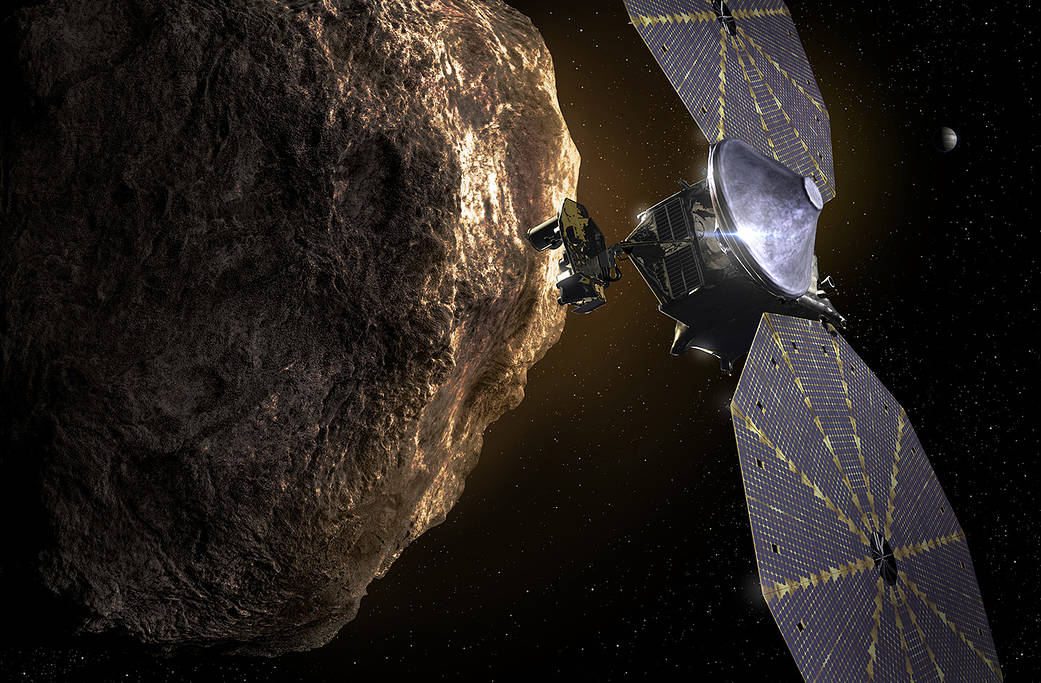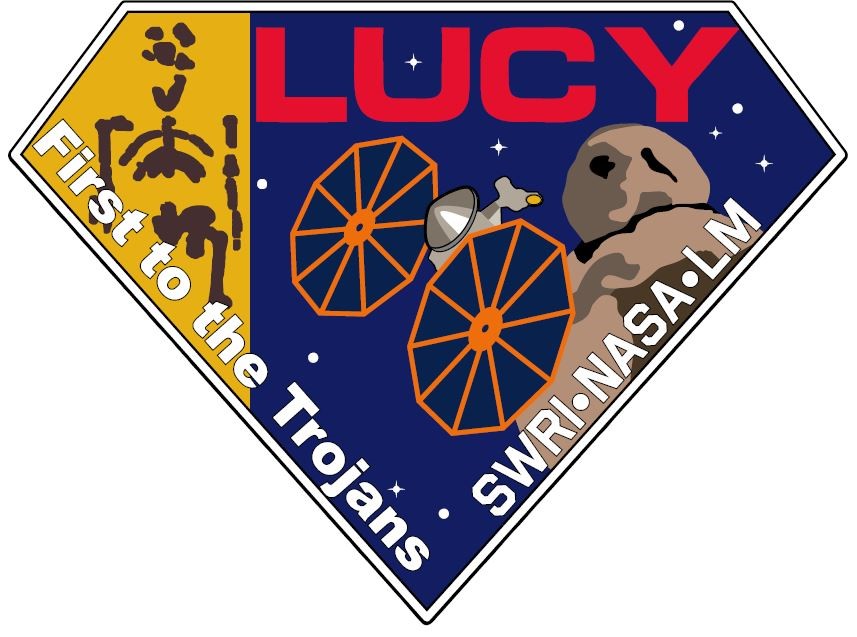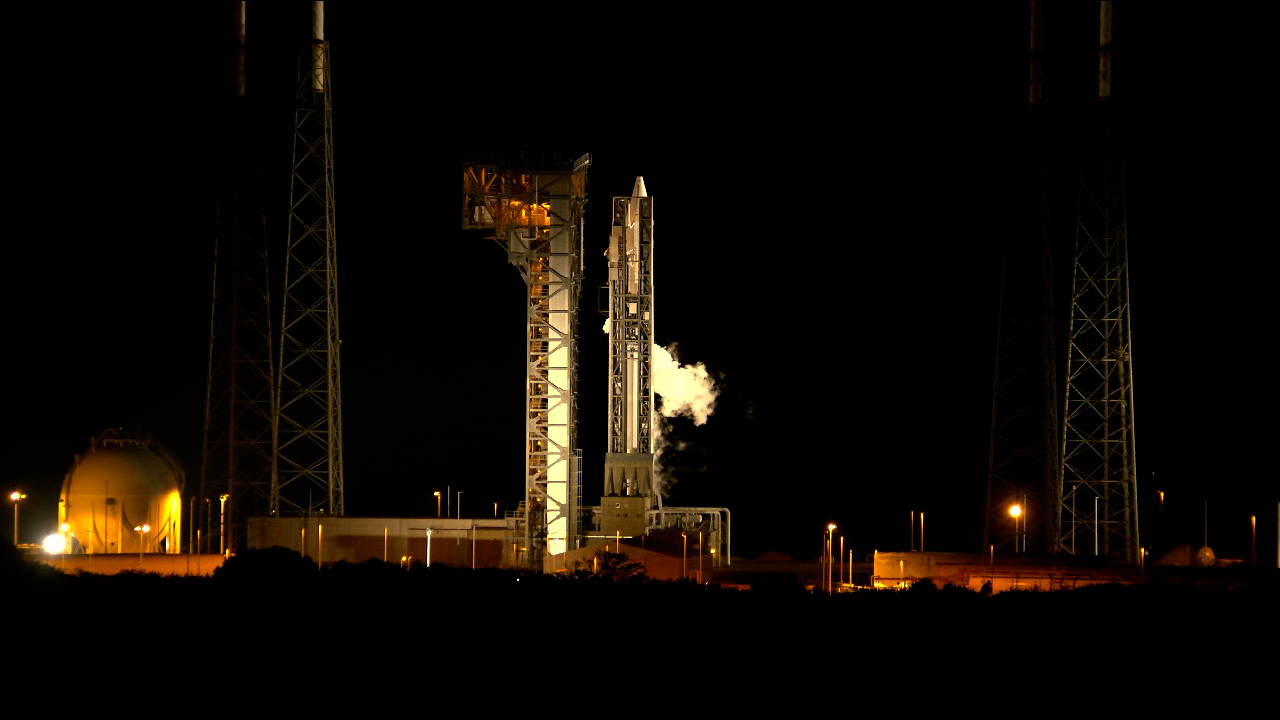The second engine burn of the Centaur has ended. Next up will be separation of the Lucy spacecraft from Centaur.
Tag: Trojan asteroids
Second Centaur Engine Burn Starts
The second engine burn of the Centaur upper stage has begun and will last for about six minutes.
First Centaur Engine Burn Ends, Now in Coast Phase
The first engine burn of the Centaur upper stage has ended. Centaur, with the Lucy spacecraft, is now in a coast phase.
Centaur Takes Over, Payload Fairing Jettisoned
The Centaur upper stage main engine has started its burn following on-time booster engine cutoff and Atlas/Centaur separation. The first of two burns for the Centaur main engine start will last nearly eight minutes. The payload fairing has been jettisoned.
Liftoff! Atlas V Clears the Launch Pad with NASA’s Lucy Spacecraft

We have booster ignition and liftoff of the United Launch Alliance Atlas V rocket at 5:34 a.m. EDT from Space Launch Complex-41 at Cape Canaveral Space Force Station in Florida, carrying NASA’s Lucy spacecraft! The rocket is on its way, carrying the spacecraft to begin its voyage to explore the Trojan asteroids.
About four minutes into flight, a series of key events will occur in rapid succession: Atlas booster engine cutoff, separation of the booster from the Centaur upper stage, ignition of the Centaur main engine for its first of two burns, then jettison of the payload fairing.
T-4 Minutes and Counting
The NASA launch conductor has polled mission managers for “go” to launch. The Lucy countdown is now underway, proceeding toward a liftoff at 5:34 a.m. EDT. During the last four minutes of the countdown, the Atlas and Centaur propellant tanks will be brought up to flight pressure, the rocket and spacecraft will be confirmed on internal power, and the Eastern Range and launch managers will perform final status checks. A computerized auto sequencer will take over the countdown in order to conduct a host of activities in precise order. Weather conditions are still good for launch.
Weather Looks Good for Launch of NASA’s Lucy Spacecraft
A weather update from Will Ulrich, weather officer with the 45th Weather Squadron, reports conditions look good for launch of the Lucy mission.
The Lucy Science Payloads

Lucy will explore the Trojan asteroids with a suite of remote sensing instruments:
- L’Ralph – an instrument provided by NASA’s Goddard Space Flight Center in Greenbelt, Maryland, that consists of two parts:
L’Ralph Linear Etalon Imaging Spectral Array (LEISA), an infrared imaging spectrometer that will reveal the absorption lines that serve as the fingerprints for different silicates, ices and organics that may be on the surface of the Trojan asteroids, and
L’Ralph Multi-spectral Visible Imaging Camera (MVIC), that will take color images of the Trojans to help determine their composition and look for indications of surface activity.
- Lucy Long Range Reconnaissance Imager (L‘LORRI) – a high resolution, panchromatic visible camera made by the Johns Hopkins University Applied Physics Laboratory in Laurel, Maryland. L’LORRI will provide the most detailed images of the surface of the Trojan asteroids.
- Lucy Thermal Emission Spectrometer (L’TES) – an instrument built by Arizona State University in Tempe, Arizona, that will measure the surface temperature of the Trojan asteroids by observing the thermal infrared spectrum, helping to understand the physical properties of the surface material.
Additionally, the navigation cameras will be used to determine the shapes of the Trojan asteroids. The High Gain Antenna will be used to both communicate with Earth and to carry out radio science experiments to measure the masses of the Trojan asteroids. Lucy Radio science is led by a team from the University of Cologne, Germany.
The Lucy Mission – First to the Trojan Asteroids
 Lucy will explore the Jupiter Trojan asteroids. During its 12-year mission, the spacecraft will explore a record-breaking number of asteroids, flying by one main belt asteroid and seven Trojan asteroids. These small bodies are remnants of our early solar system, now trapped in stable orbits associated with – but not close to – the giant planet Jupiter. The Trojan asteroids are in two “swarms” that lead and follow Jupiter in its orbit around the Sun and are almost as numerous as the objects in the Main Asteroid Belt. Lucy also will circle back to Earth three times for gravity assists, making it the first spacecraft ever to return to the vicinity of Earth from the outer solar system.
Lucy will explore the Jupiter Trojan asteroids. During its 12-year mission, the spacecraft will explore a record-breaking number of asteroids, flying by one main belt asteroid and seven Trojan asteroids. These small bodies are remnants of our early solar system, now trapped in stable orbits associated with – but not close to – the giant planet Jupiter. The Trojan asteroids are in two “swarms” that lead and follow Jupiter in its orbit around the Sun and are almost as numerous as the objects in the Main Asteroid Belt. Lucy also will circle back to Earth three times for gravity assists, making it the first spacecraft ever to return to the vicinity of Earth from the outer solar system.
The Lucy mission is named after the fossilized skeleton of an early hominin, or pre-human ancestor, that was found in Ethiopia in 1974 and named “Lucy,” by the team of paleontologists who discovered it.
Lucy has the following science objectives at each of its destinations:
- Surface Geology – Lucy will map the shape, albedo, and crater spatial and size-frequency distributions; determine the nature of crustal structure and layering; and determine the relative ages of surface units
- Surface Color and Composition – Lucy will map the color, composition and regolith properties of the surface, and determine the distribution of minerals, ices, and organic species
- Interiors and Bulk Properties – Lucy will determine the masses and densities, and study sub-surface composition via excavation by craters, factures, ejecta blankets, and exposed bedding.
- Satellites and Rings – Lucy will look for and study satellites and/or rings that might orbit the targeted Trojan asteroids.
NASA’s Lucy Ready for Launch atop Atlas V Rocket

Good morning, and welcome to launch day for NASA’s Lucy spacecraft. The first space mission to explore a diverse population of small bodies known as the Jupiter Trojan asteroids will launch on a United Launch Alliance Atlas V 401 rocket from Space Launch Complex-41 at Cape Canaveral Space Force Station in Florida. Launch is targeted for 5:34 a.m. EDT, at the beginning of a 75-minute launch window.
The latest weather update from the 45th Weather Squadron remains at a 90 percent chance of favorable weather today for liftoff of the Atlas V rocket with NASA’s Lucy spacecraft.
Today’s launch blog originates from the NASA News Center here at Kennedy Space Center in Florida. Follow the launch countdown and launch at https://www.nasa.gov/nasalive.
